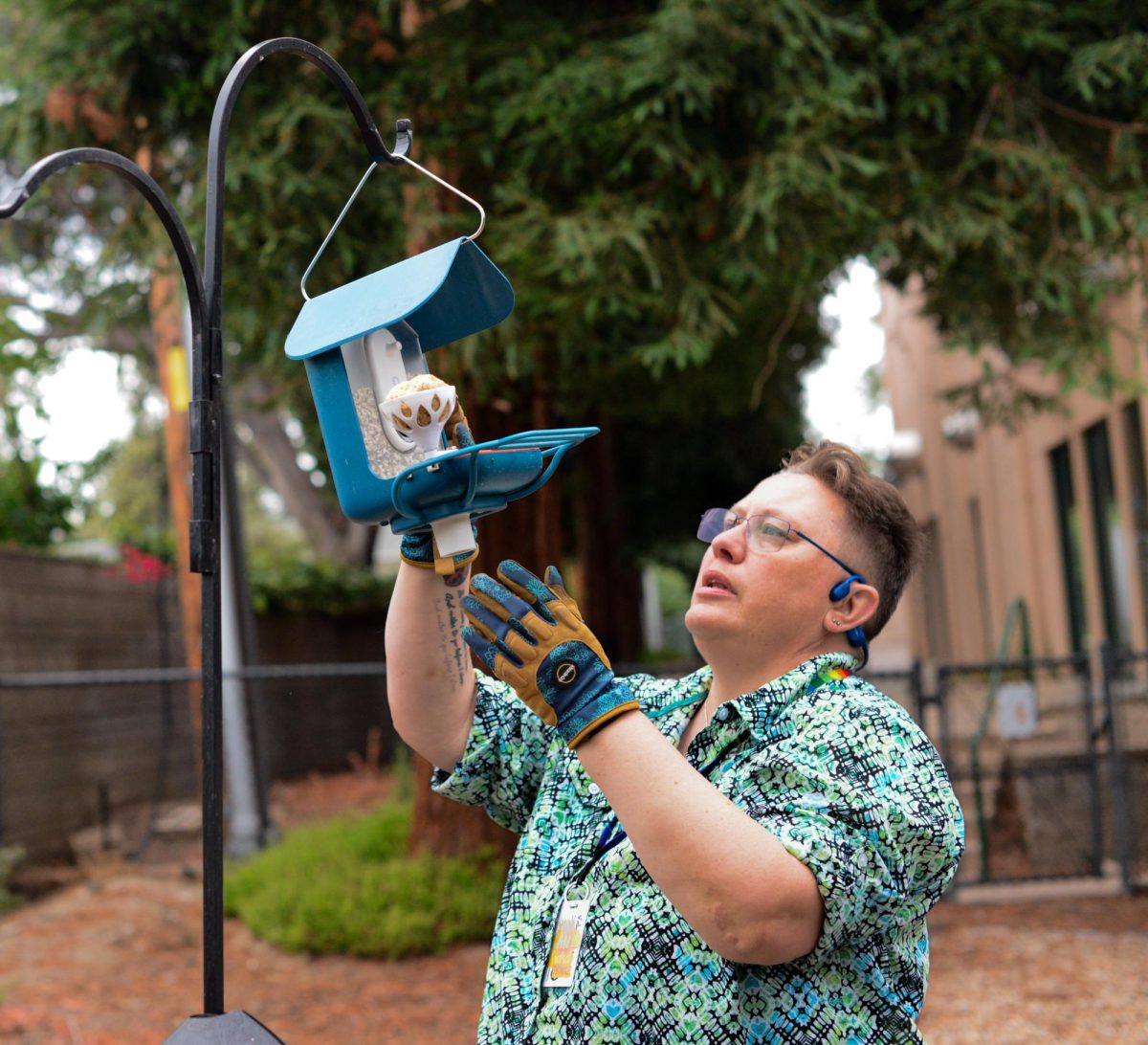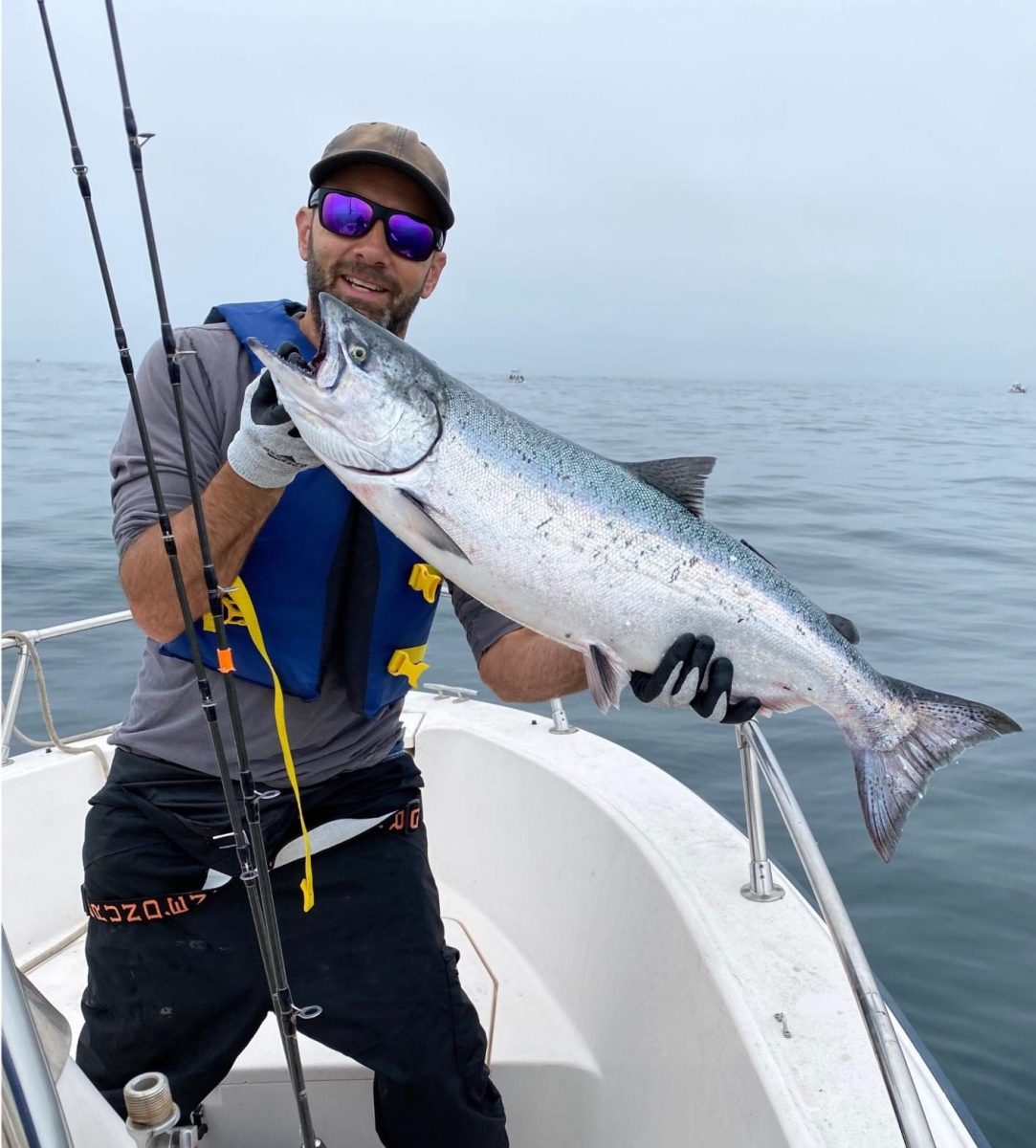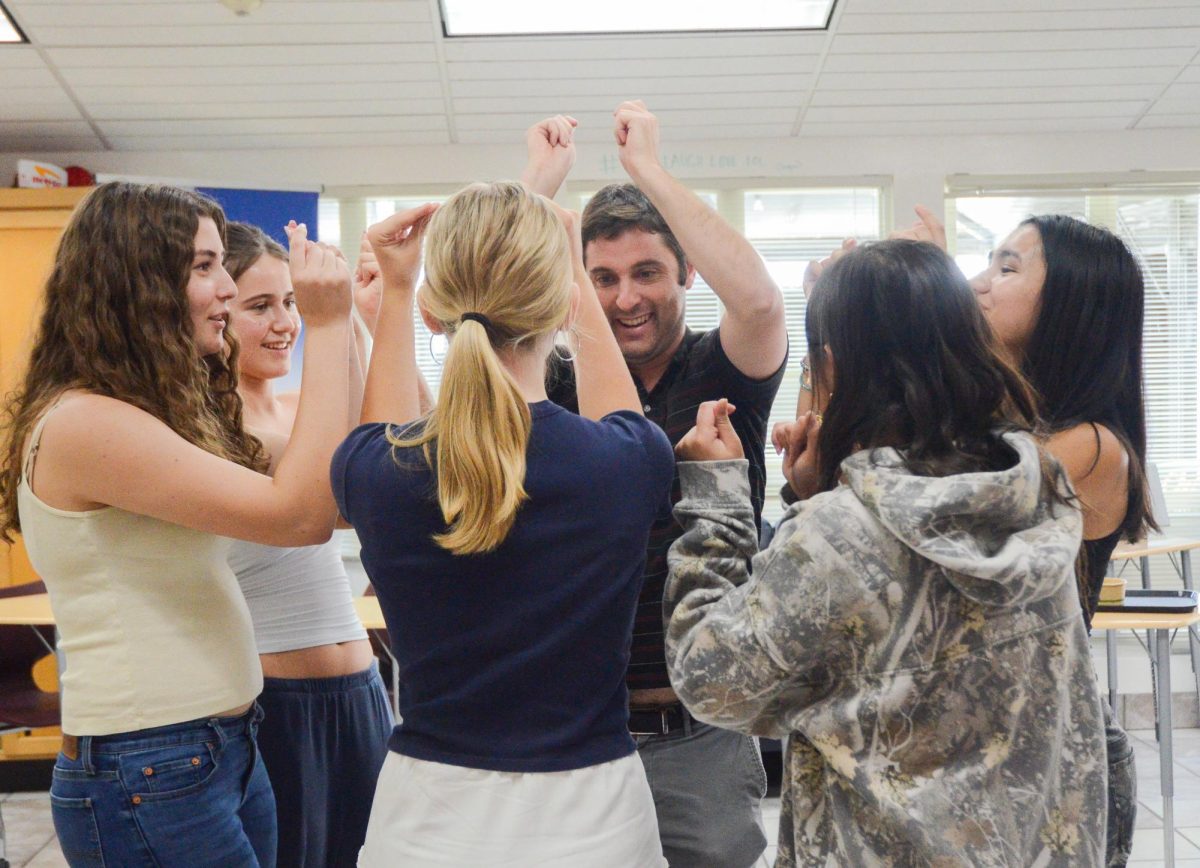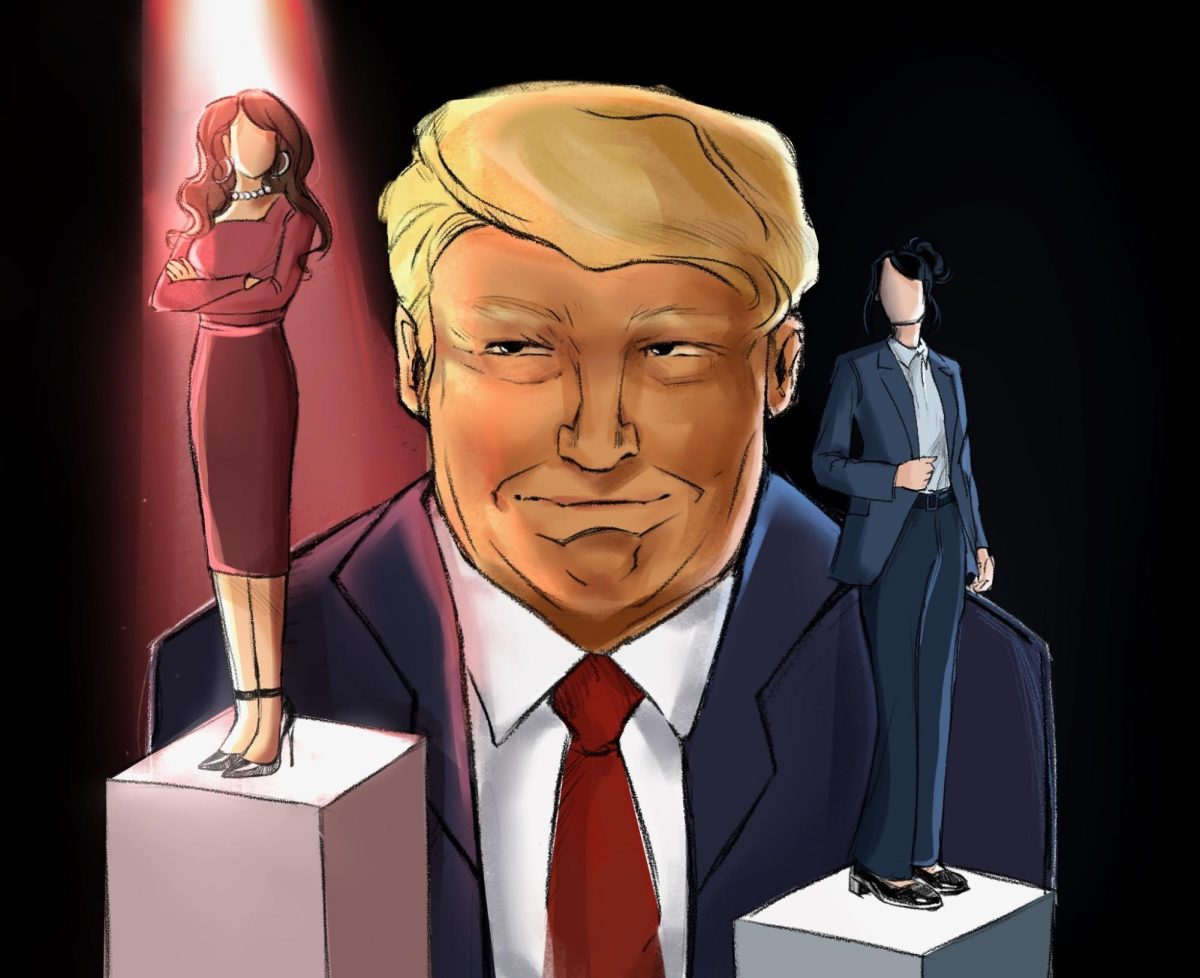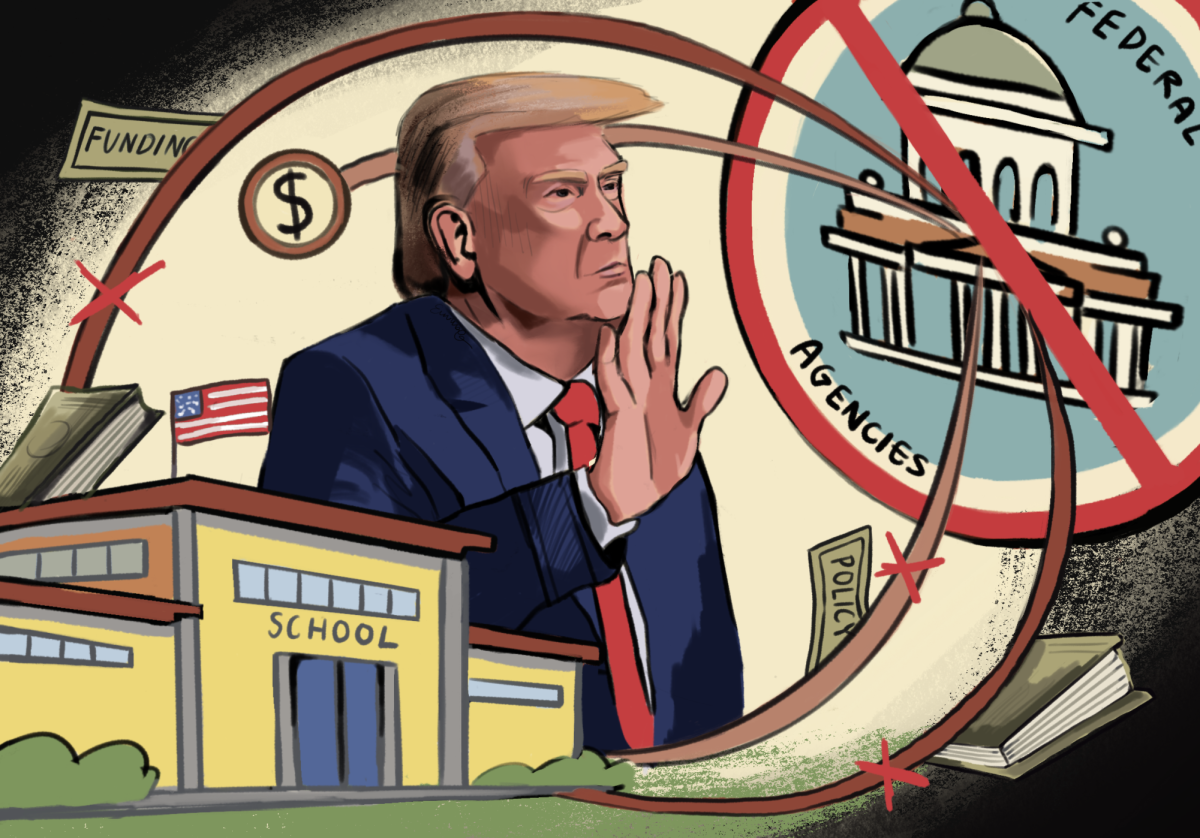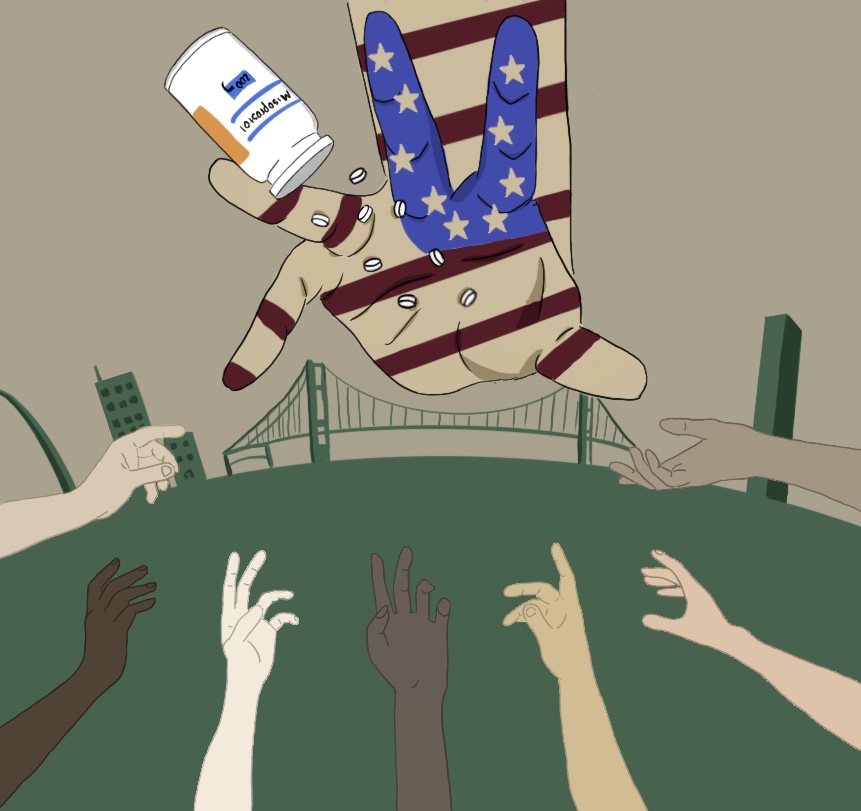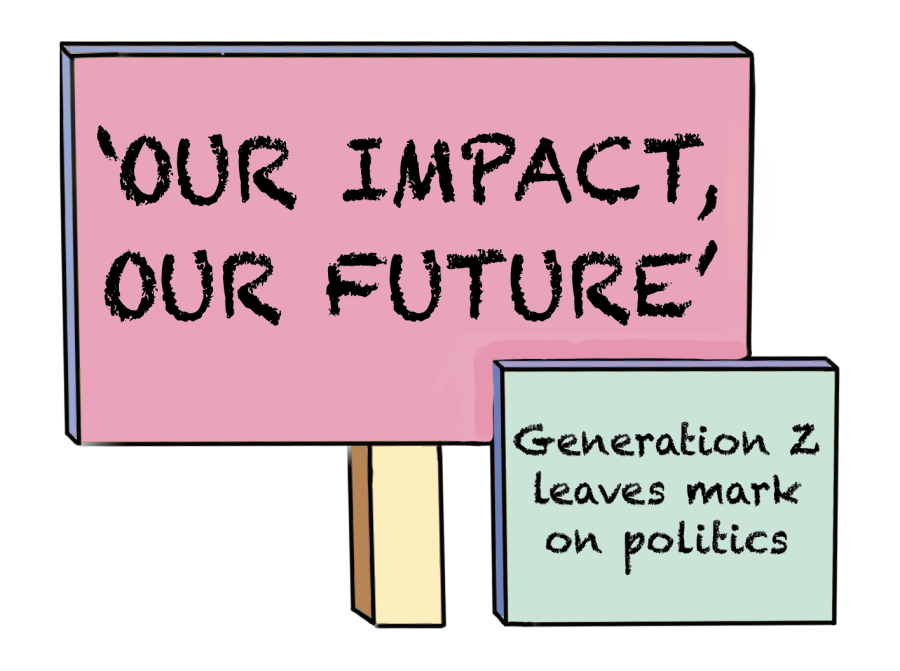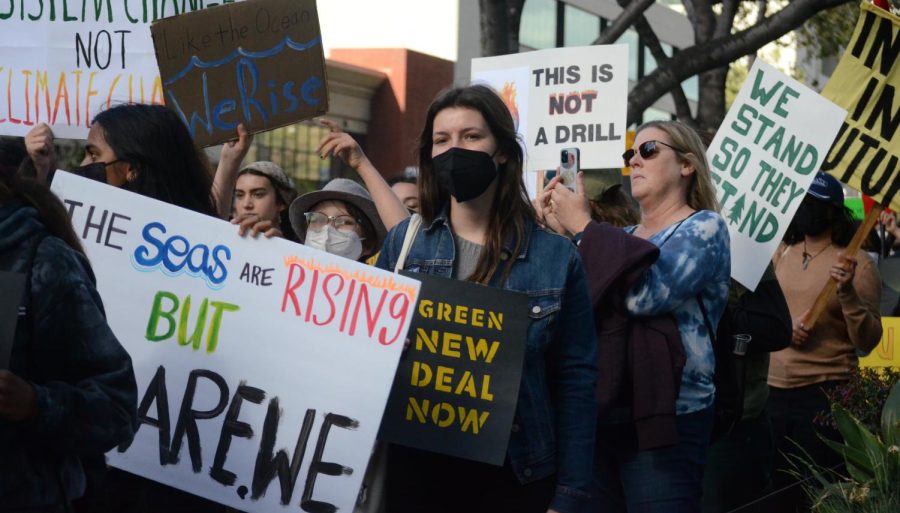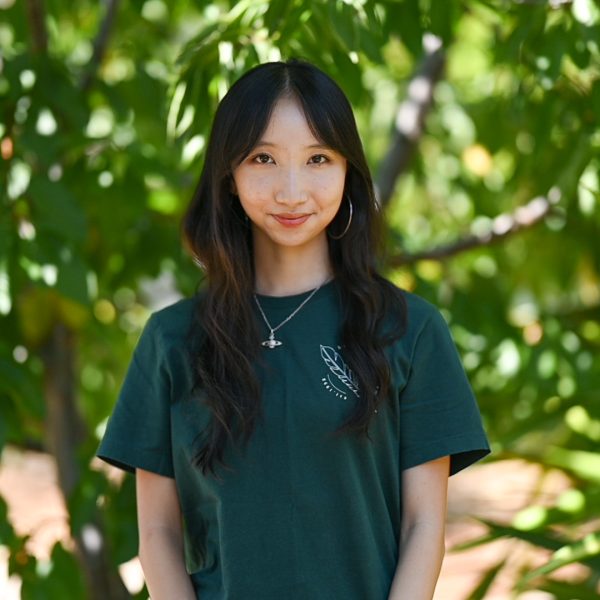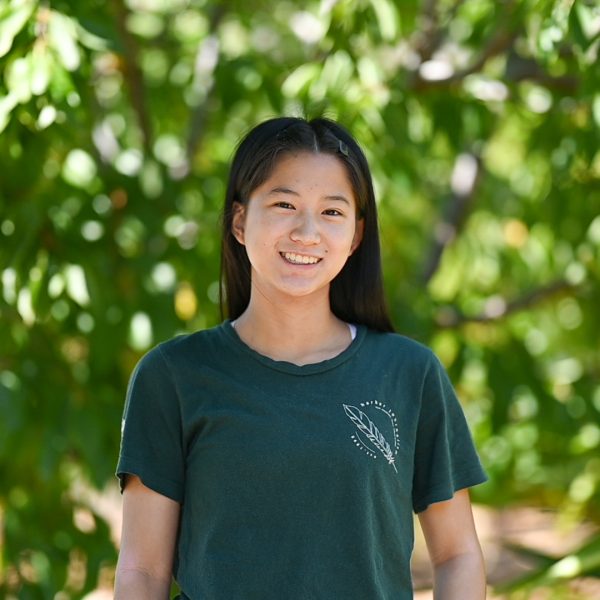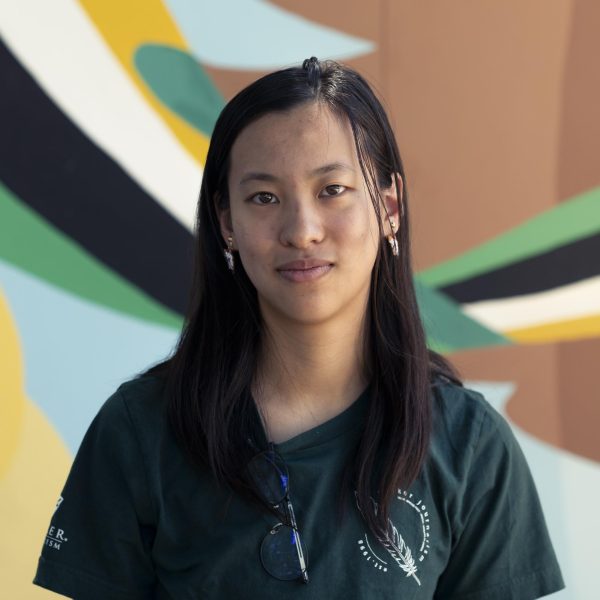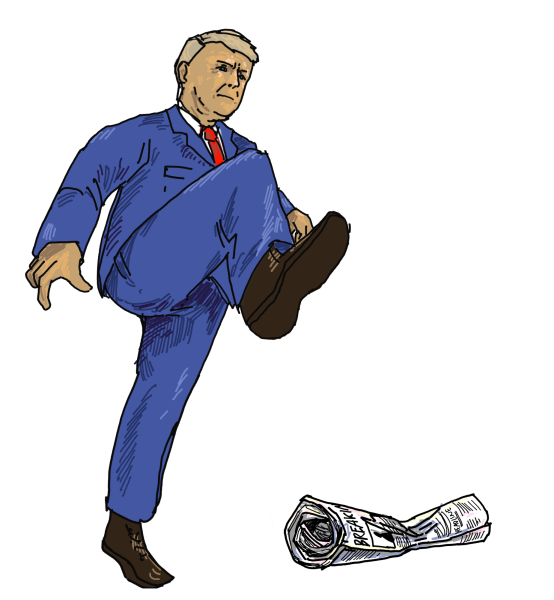
Pulitzer Prize-winning Washington Post cartoonist Ann Telnaes drew a sketch depicting major media and tech executives, including the Post’s owner Jeff Bezos, bowing before Donald Trump. When an editor rejected the cartoon, she resigned, citing a violation of free speech and free press.
Recent controversies surrounding editorial decisions reveal the influence that powerful figures exert over the media. Media ownership has become increasingly concentrated among a few individuals and corporations, and the public is raising concerns over the dangers that powerful oligarchs like Elon Musk and Bezos can pose to a free press.
“When you see these things happening, there is a trend,” Journalism Education Association of Northern California President-elect Tracy Sena said. “No one is saying that directives are coming from Bezos himself, but for a paper with a historically liberal slant to suddenly be unable to endorse political candidates or run critical cartoons suggests a shift.”
A similar controversy arose when the Post and the Los Angeles Times announced that they would no longer endorse presidential candidates before the 2024 election, reportedly blocking endorsements of Kamala Harris that had already been written.
“Journalists have the ability to take on powerful institutions and write about them, and we’re well aware of our First Amendment rights that allow us to do that,” Mercury News reporter Shomik Mukherjee said. “But at all times, newspapers and journalists are probing the boundaries of that independence to the extent that they can.”
The hedge fund Alden Global Capital merged five local newspapers into the East Bay Times and Mercury News in 2016. When one company owns multiple media sources, there is less diversity in viewpoints, which leads to biases in reporting.
“I’ve seen a lot of individuals buying up media corporations, and that’s a massive problem because it hampers their ability to report independently and report without bias,” senior Aaron Bao said. “A lot of people get their information through news organizations and not much else, so if you don’t have that independent reporting it makes it hard for true information to get out there.”
The Bay Area is also home to the world’s most influential tech corporations like Google, Meta and X, which play an outsized role in shaping the news people see. Platforms like Instagram and TikTok dominate how young people receive information, and the types of stories that gain visibility can be influenced by the financial and political interests of media owners.
“Tech companies are extremely powerful and wealthy, but the media likes to question power. So that relationship is often really fraught,” Mukherjee said. “But broadly speaking, whether it’s Trump, Elon Musk, Obama or Joe Biden, anyone in a major position of power can pose a unique threat to the press.”
It’s when the people in power hold political interests that their influence on free press is most evident. Bezos, who donated $1 million to Trump’s inauguration fund and attended the inauguration in a front row exclusive seat, is among numerous tech executives accused of seeking favor with the new president—a theme illustrated in Telnaes’ cartoon. His prominence warrants news coverage, but his ownership of the Post limits the paper’s ability to report on him freely.
Like the Post, the LA Times blocked the editorial board from endorsing Kamala Harris, leading to the resignation of the board’s editor and two members. Publisher Patrick Soon-Shiong, who was also featured in Telnaes’s cartoon, justified his decision by asking the board to provide a “factual analysis” of the candidates instead of taking a political stance.
Sena disagrees, citing the historical precedent for editorials to be separated from unbiased news.
“An editorial will always have a slant,” Sena said. “The editorial page is not objective, it is inherently subjective. However, everything published on the editorial pages should still be backed up by fact.”
Beyond editorial pages, media organizations often lean in a particular direction, shaping narratives that align with their audiences’ perspectives. Maintaining journalistic independence is challenging for media outlets when they are beholden to both their ownership and the expectations of their subscriber base.
“Realistically, most of these news organizations and media organizations are leaning one way or the other already, so most of the people who read them are already going to sympathize with the stories and the positions that they take,” Aaron said. “The more worrying part about that for me is just losing that independence and having media organizations be fearful of retaliation.”
With growing media consolidation, it is critical that journalists provide accurate and unbiased reporting. However, it is equally important for readers to actively seek out factual information. Mukherjee emphasized the importance of thinking like a journalist when consuming news.
“If you’re a high school student, one of the smartest things you can do is to divorce yourself from the idea that the information you find on a platform that’s controlled by somebody else is perfect, Mukherjee said. “If someone’s making a claim on social media, that’s their telling of events. Find other sources, and think critically about what is actually supported by evidence.”
The rise of AI-curated news feeds and social media algorithms, often controlled by tech companies with non-transparent interests, makes this even more crucial. Sena argues that a free press depends on an informed and engaged public.
“Since many people in the Bay Area will go on to work at these companies, I hope that they will take their own integrity into the boardroom when decisions are being made and speak up,” Sena said. “There’s a responsibility for all of us to squash untruths. The need for responsible journalism, for individuals who are ready to seek the truth and report it, is more important now than ever.”


















![“[Building nerf blasters] became this outlet of creativity for me that hasn't been matched by anything else. The process [of] making a build complete to your desire is such a painstakingly difficult process, but I've had to learn from [the skills needed from] soldering to proper painting. There's so many different options for everything, if you think about it, it exists. The best part is [that] if it doesn't exist, you can build it yourself," Ishaan Parate said.](https://harkeraquila.com/wp-content/uploads/2022/08/DSC_8149-900x604.jpg)




![“When I came into high school, I was ready to be a follower. But DECA was a game changer for me. It helped me overcome my fear of public speaking, and it's played such a major role in who I've become today. To be able to successfully lead a chapter of 150 students, an officer team and be one of the upperclassmen I once really admired is something I'm [really] proud of,” Anvitha Tummala ('21) said.](https://harkeraquila.com/wp-content/uploads/2021/07/Screen-Shot-2021-07-25-at-9.50.05-AM-900x594.png)







![“I think getting up in the morning and having a sense of purpose [is exciting]. I think without a certain amount of drive, life is kind of obsolete and mundane, and I think having that every single day is what makes each day unique and kind of makes life exciting,” Neymika Jain (12) said.](https://harkeraquila.com/wp-content/uploads/2017/06/Screen-Shot-2017-06-03-at-4.54.16-PM.png)








![“My slogan is ‘slow feet, don’t eat, and I’m hungry.’ You need to run fast to get where you are–you aren't going to get those championships if you aren't fast,” Angel Cervantes (12) said. “I want to do well in school on my tests and in track and win championships for my team. I live by that, [and] I can do that anywhere: in the classroom or on the field.”](https://harkeraquila.com/wp-content/uploads/2018/06/DSC5146-900x601.jpg)
![“[Volleyball has] taught me how to fall correctly, and another thing it taught is that you don’t have to be the best at something to be good at it. If you just hit the ball in a smart way, then it still scores points and you’re good at it. You could be a background player and still make a much bigger impact on the team than you would think,” Anya Gert (’20) said.](https://harkeraquila.com/wp-content/uploads/2020/06/AnnaGert_JinTuan_HoHPhotoEdited-600x900.jpeg)

![“I'm not nearly there yet, but [my confidence has] definitely been getting better since I was pretty shy and timid coming into Harker my freshman year. I know that there's a lot of people that are really confident in what they do, and I really admire them. Everyone's so driven and that has really pushed me to kind of try to find my own place in high school and be more confident,” Alyssa Huang (’20) said.](https://harkeraquila.com/wp-content/uploads/2020/06/AlyssaHuang_EmilyChen_HoHPhoto-900x749.jpeg)





